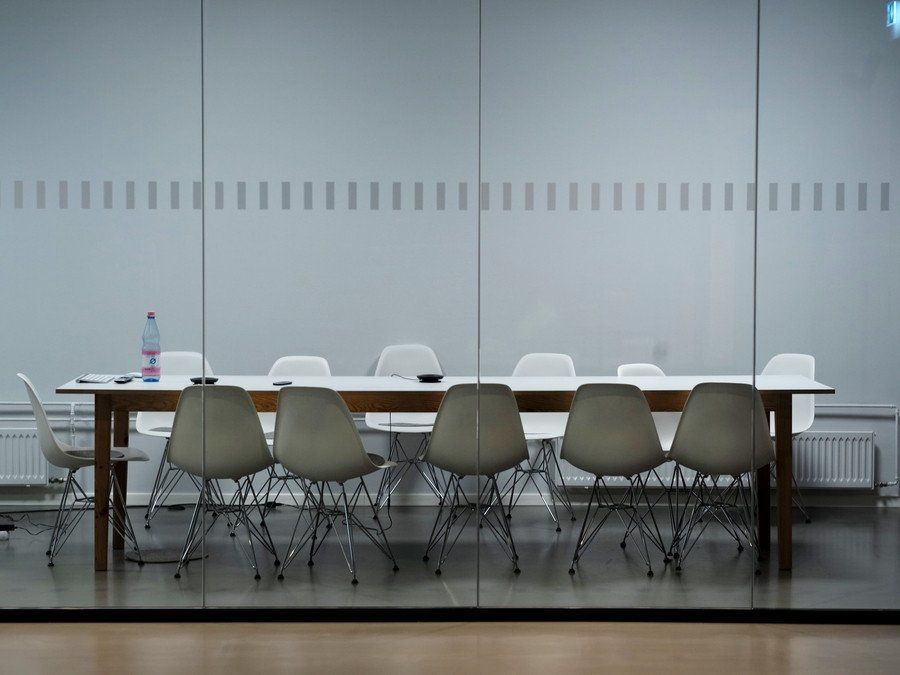Are Open-Plan Offices All They Were Hyped To Be?

Tear down the walls!
The innovation of open-plan offices was hailed as a triumph for transparency, clear communication, and greater team cohesion.
They were supposed to be a hotbed for productivity and ideas: no longer would walls separate colleagues and leave them in isolation. Open-plan offices was here to liberate the mind and allow creative juices to flow.
Two million cubic meters of pure creative juice per second
That was the idea, anyway. As it turns out, open-plan office spaces might be just as awful as many workers have thought for years, and more toxic for organisations than leaders realise.
In a Harvard study, researchers provided significant evidence to show that, rather than increase productivity and boost creativity, open office spaces are having the opposite effect.
Too much of a good thing
Part of the problem seems to be that open-plan offices create unwanted distractions for employees, and increases levels of self-consciousness, which makes people feel uneasy.
In an interview, Harvard Business School professor and study co-author, Ethan Bernstein, said, “I walk into this space, and I see everyone wearing big headphones staring intently at a screen trying to look busy because everyone can see them.”
So, what’s the problem? As the study suggests, with everyone striving to look busy, others might be reluctant to disturb their colleagues. As a result, face-to-face interactions between employees diminish, and communications are mostly conducted via digital means such as email and instant messaging.
In line with similar studies on workplace productivity, digital communication has been shown as a significant time waster, with employees spending up to two hours per day on email alone. In the time that it takes to read and reply to emails, face-to-face interactions tend to be more time-efficient, and actually serve to improve team cohesion.
READ: Is It Time to Monitor My Remote Team?
The need for a breather
There is a natural human desire for privacy, and when we don’t have privacy, we find ways of achieving it.
Another problem with open-plan work spaces is that, when people find their privacy lacking, they inevitably find ways to steal pockets of time where they can be at ease without feeling that they’re being constantly watched.
As Professor Bernstein puts it, there is a “natural human desire for privacy, and when we don’t have privacy, we find ways of achieving it. What it (open-plan) was doing was creating not a more face-to-face environment, but a more digital environment. That’s ironic because that’s not what people intend to try to do when creating open office spaces.”
Of course, there’s one clear advantage to open-plan office spaces: they’re cost-efficient. However, over the long term, it might be to the organisation’s financial detriment to have employees feeling disengaged and demoralised in the open. Leaders would do well to consider providing closed spaces for those who feel more comfortable – and who are more productive – in their own space.
When you look up and see your boss staring at you.
In professor Bernstein’s view, leaders are spending “more time thinking about how to design workspaces based on the observer’s perspective (the leader’s) rather than the observed.” When business leaders consider that organisations are made up of different personality types and work preferences, those who take positive measures to address the problems of open-plan offices could find themselves with a more creative, productive, and engaged workforce.
Let’s take a look at some of the advantages of having close-space offices, which might encourage leaders to provide at least some enclosed space for employees. As the research suggests, this is a move that would be beneficial to the organisation just as much – if not more so – as it would be to the employee.
1. They offer much-needed privacy
Whether it’s having to go out the office to take an important call, putting up with distractions, or trying to think through some problem, many people know that open-plan offices can be irritating at best when they’re working. People tend to flourish when they have a space that’s just theirs, because it allows them to be comfortable and relaxed – and that can work wonders for productivity.
2. Closed spaces allow ideas to flourish
Creativity flows best when people feel relaxed and calm, within a peaceful environment. It can be difficult, then, to come up with good ideas with distractions and noise going on around you. Do you ever wonder why senior managers and CEOs get their own office space? Partly, because it allows them to focus and produce quality work. If employees were given access to closed spaces, it could very well see a rise in the overall quality of output and outcomes.
3. They provide higher levels of concentration – and reduce the spread of communicable viruses
It’s a no-brainer that close-space offices allow people to concentrate on the tasks at hand with minimal hassle. With walls around you, it literally provides more focus compared to an open-space, where so much stimuli can keep employees distracted for hours of time throughout their working week. Closed spaces also help to minimise the spread of common illnesses such as the cold or flu, meaning fewer days lost to medical leave for organisations. In the wake of the COVID-19 pandemic, we see that this can prevent the spread of viruses far more sinister than the common cold. In fact, for this reason alone, many offices will be shifting away from open plan offices.
4. Organisations can enjoy higher income
With an increase in productivity, creativity and engagement – not to mention fewer days of medical leave – this is bound to translate to higher revenue for any organisation that provides closed spaces for their employees. Not only that, but the costs that come with bringing in new hires might also be reduced since engaged, productive employees tend to be happier in their role and less likely to seek employment elsewhere.
SEE ALSO: From Cramped Counting Houses To The Googleplex: The Evolution of Workspaces
Functional








